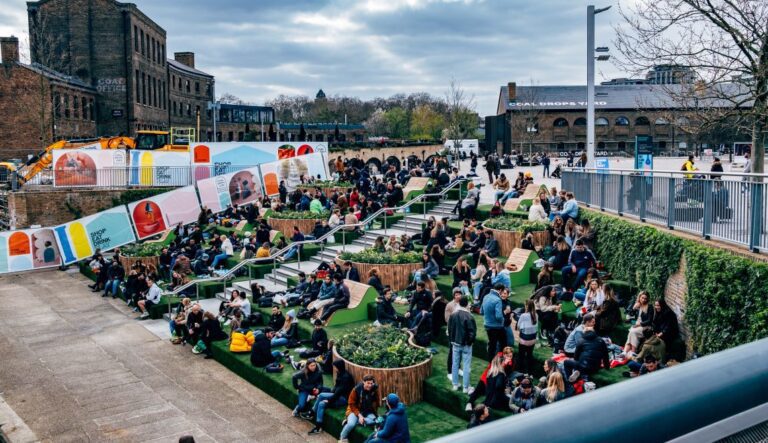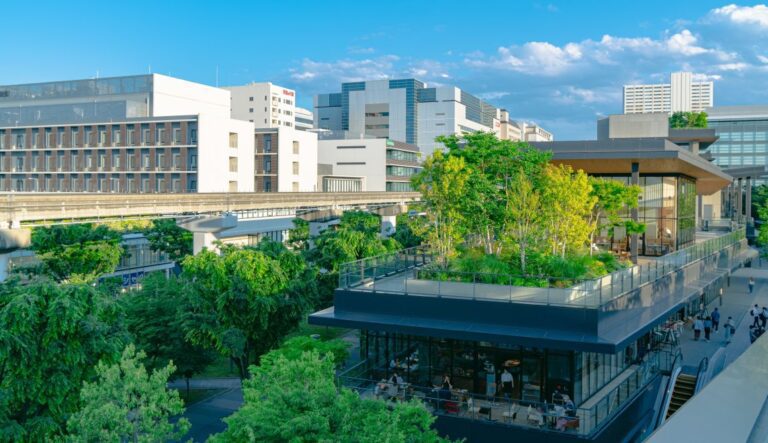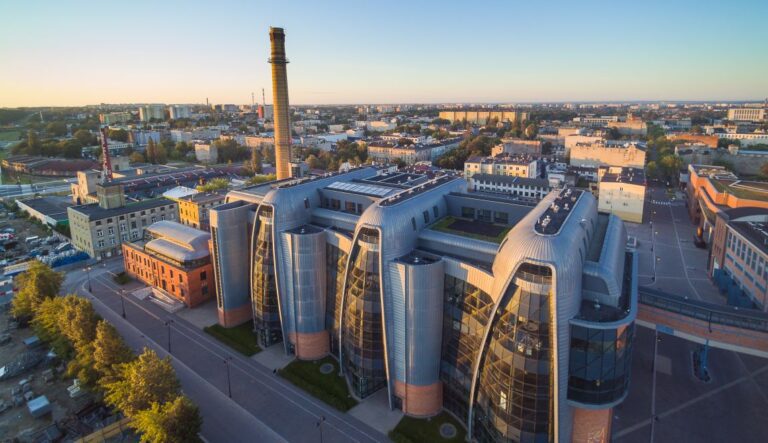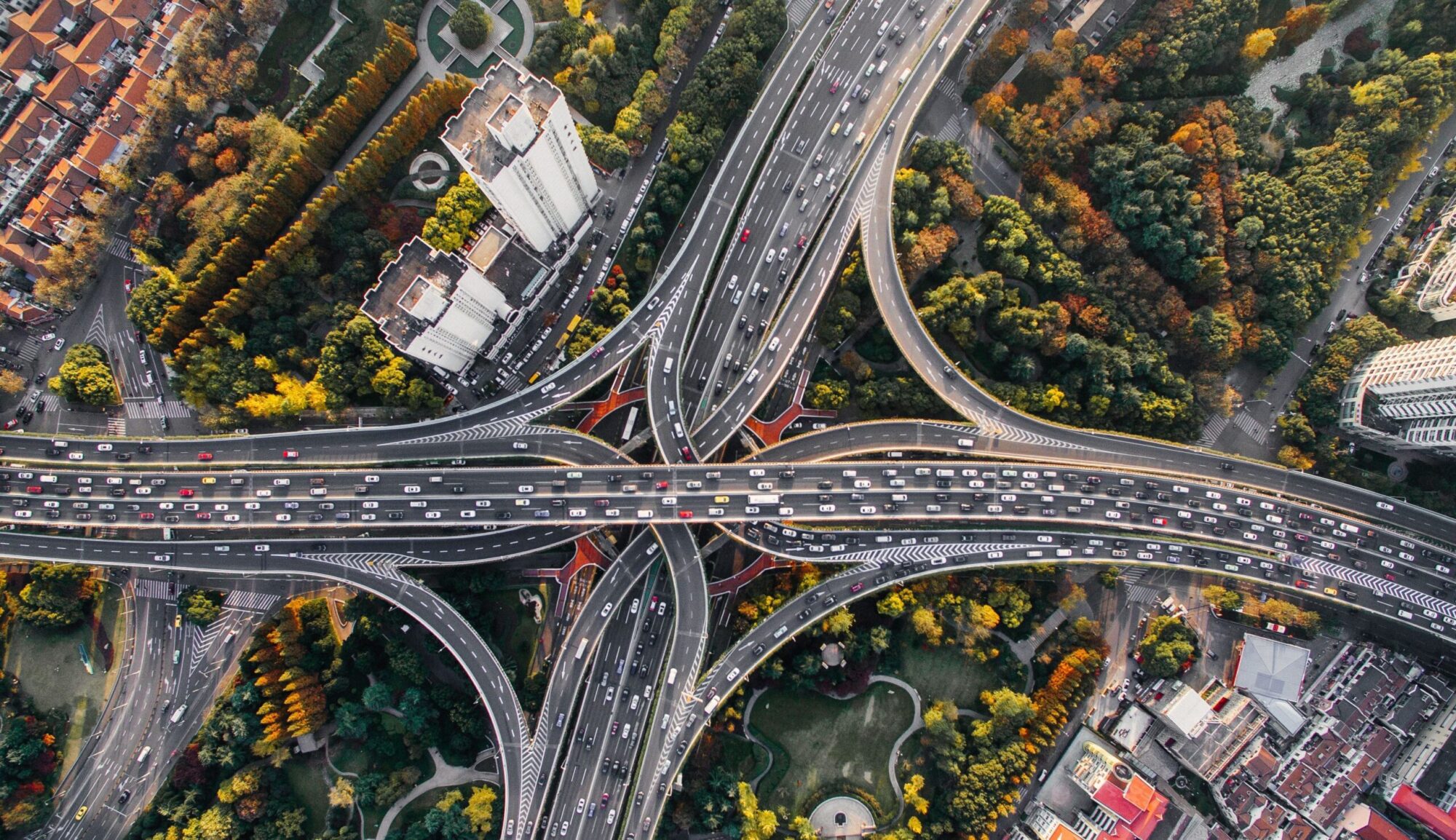
Over the years, cities around the world have been designed from the perspective of the car user or have been adapted to meet the needs of car users. In traditional, pedestrian-oriented cities, streets have over time become car-only places, with squares and public spaces often being turned into parking areas. In addition, an increase in the scale of investments, the separation of project functions, and the centralisation of public facilities have all contributed to urban sprawl – the process of suburbanisation further increasing the dependence of residents on cars.
It took years to realise that while road transport provides flexibility, such an organisation of cities leads to an inefficient use of space, increases distances between services and deprives residents of places for everyday interaction. Intensive urban growth also leads to air pollution, significant greenhouse gas emissions and the depletion of non-renewable energy resources. Based on data from the World Business Council for Sustainable Development, cities currently generate about 80% of total global electricity demand and account for 70% of greenhouse gas emissions. The main energy consumers and GHG emitters in cities are buildings. Estimates by the International Energy Agency (IEA) indicate that buildings are responsible for a third of CO2 emissions, 40% of energy consumption, and 50% of the consumption of all natural resources. The scale of the phenomenon is, of course, determined by the fact that more than half of humanity currently lives in cities. In Poland, the urban living rate exceeds 60%, and in the European Union it stands at 75%.
Sustainability is driving the development of European cities
Faced with a growing number of climatic, demographic and planning challenges, modern cities are changing their priorities. To counteract these threats, more and more European cities are taking measures aimed at better urban planning, the development of public transport and cycling infrastructure, increased focus on renewable energy sources and the embracing of the green industry. As a rule, sustainable development is already a guiding principle for urban development in Europe.
New urbanism
A key urban trend changing European cities is New Urbanism. It has its roots in the ideas of sustainable development, whilst also being connected with ecology, psychology and sociology. NEW URBANISM assumes a return to the traditional shape of the city, where people and their needs are the priority. Cities are once again to be friendly and comfortable for their residents, and it is therefore important to create attractive public spaces, appropriate scales of development, while removing transit traffic from the city and creating facilities for urban space users that don’t rely on the car. The ideal of the modern city is sometimes referred to as the „compact city”, the „cohesive city” or the „human scale city”, where multifunctional space combines housing, services, offices, recreation and cultural facilities. THE PRIORITY IS TO CREATE SPACE THAT IS FRIENDLY, ATTRACTIVE AND SAFE.
The evolution of new urbanism
The concept has been developing since the 1970s and has become the basis for a number of other trends, such as SUSTAINABLE URBANISM, Green Urbanism and Ecological Urbanism. These trends have in turn fed into the development strategies of many European cities, with the ideas being applied accordingly. The evolution of the concept is ongoing due to the increase in social activity and growing consciousness of city dwellers. New currents have resulted, among them:
- social participation (inclusion of citizens in the decision-making processes of local governments concerning urban space),
- the sharing economy (turning away from consumerism in favour of pragmatism),
- a growing concern for the environment,
- the development of urban activism.
Sustainable urbanism is an approach to urban planning whichraises the quality of life and living standards,creating a better urban space. This is done via sustainable development,effective management of natural resources, transformation and repurposingof degraded land, filling in the gaps between existing buildings, landscapeplanning, development of transport systems, and care for other aspects ofthe environment. For the future development of cities, this means forminga dense, compact structure of mixed function development, with good accessto infrastructure (technical, communication, social) and green areas.
Sustainable Urbanism derives from a combination of three trends: Smart Growth, New Urbanism and multi-criteria building certification (green building trend). It combines these three approaches to create a truly sustainable environment for people.
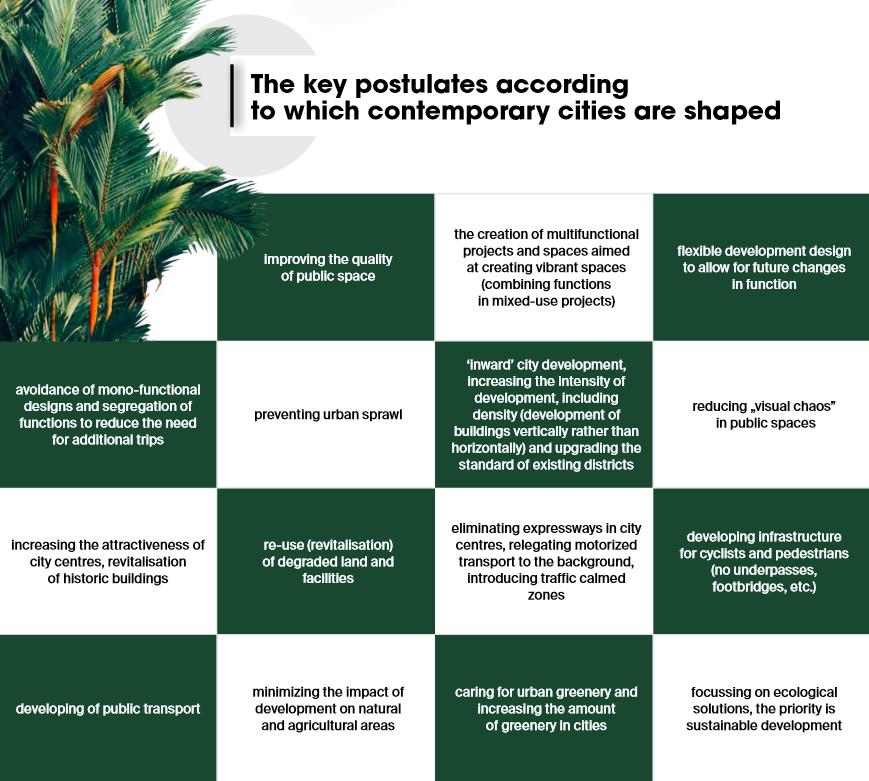
More information you can find the “A city in good shape. Trends that are changing cities” report.
